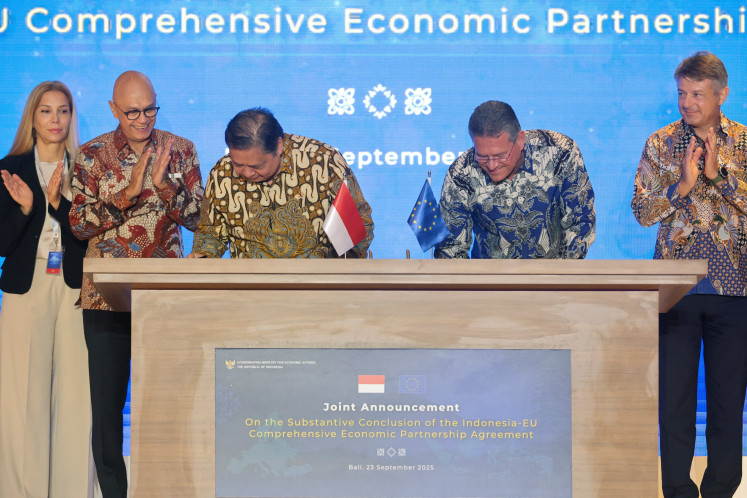Popular Reads
Top Results
Can't find what you're looking for?
View all search resultsPopular Reads
Top Results
Can't find what you're looking for?
View all search resultsDebt sustainability in Indonesia
Despite the larger deficit, inflation remains low, the current account is manageable, and foreign reserves are high.
Change text size
Gift Premium Articles
to Anyone
I
n recent years Indonesia has developed a framework for fiscal policy that has brought down public debt and interest rates. As a result, investor confidence has been increased, and the prospects for long-term growth and poverty reduction improved.
At the center of this achievement has been the deficit rule that has made fiscal policy more predictable, but other important components include decentralization that makes government spending more responsive to local needs, the growth of sharia finance that makes the financial system more inclusive, and reporting by the Supreme Audit Board (BPK) that holds the government accountable to its goals.
The COVID-19 crisis has shown the strength and benefits of these reforms. As in other countries, the Indonesian government has responded to the pandemic by supporting lives and livelihoods, and by keeping the lights on in the economy. This response has required temporarily higher fiscal deficits, last year and this year. These higher deficits have pushed up the government debt ratio and the cost of the debt in the budget. Still, the increase in the debt has been relatively small and from a low starting point.
The IMF, in its latest annual assessment, estimated that gross general government debt has increased from about 31 percent of gross domestic product (GDP) at end-2019 to 36 percent of GDP at the of last year. At the end of this year, the debt ratio should reach 41 percent.
In recent years, lower global interest rates and a deep pool of savings have allowed some countries – including many advanced economies – to finance larger debts than we would have thought were sustainable even a few years ago. But even under those older frameworks, Indonesia’s debt level would be seen as sustainable.
How do we know this? For one reason because of Indonesia’s stability during the pandemic. Foreign investors, who sold Indonesian debt last year, have returned. Despite the larger deficit, inflation remains low, the current account is manageable, and foreign reserves are high. The markets agree.
Though low global interest rates help, Indonesia’s borrowing costs are no higher today than they were before COVID-19. And unlike many other emerging markets, rating agencies have not downgraded their assessment of Indonesian creditworthiness.
This does not mean Indonesia can be complacent. The recent rise in cases reminds us that COVID-19 will be with us for a long time. As cases fall and the economy begins to normalize, the deficit should move back to the 3 percent target under the deficit rule, ideally via a fairer and more robust tax system that facilitates more spending on social goals.
And the global challenge of climate change requires all governments, including Indonesia’s, to move toward a zero emission economy while supporting innovation and protecting the poor.
Fortunately, and at a time when the world will be focused on Indonesia’s Group of 20 presidency, the country is in a favorable position. The credibility won by Indonesia’s fiscal institutions has allowed the government to protect the poor and support growth during this crisis without putting the fiscal position at risk.
When the private sector recovers, these frameworks should continue to guide policy. The IMF Fund looks forward to continuing to work with Indonesia as that process unfolds, to supporting Indonesia as it leads the global discourse on economic policy through the G20 next year, and to building long-term prosperity for all Indonesians.
***
The writer is IMF senior resident representative for Indonesia.









